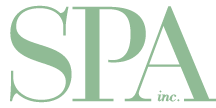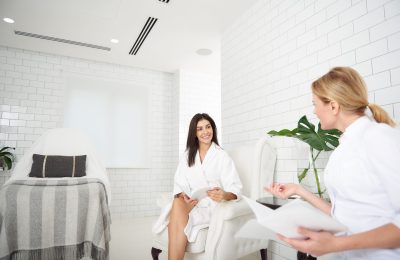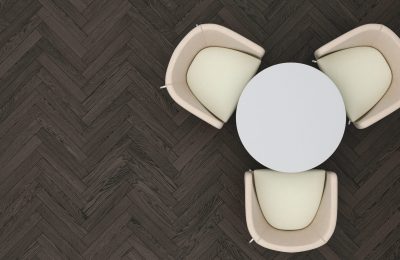In the spa industry, hiring the right employee always benefits owners By Brooke SmithFor employers, hiring a qualified employee can…
Everybody wins
How spa software and revenue management can improve your bottom line
The time has come for spa operators to embrace the significant opportunity to improve the financial performance of their operations. Without fundamentally changing the services or products they sell, they can make small but significant changes to when they offer those services in order to produce incredible improvements in their top and bottom line. This is the fundamental premise behind revenue management, without which airlines, hotels and car rental companies would not even fathom operating their businesses. In fact, without revenue management, these businesses would likely not survive.
Any business that has variable periods of high (and low) demand, takes reservations in advance, and has perishable inventory and low variable costs, is a strong candidate to employ revenue management techniques. I believe many spas dismiss the possibility of revenue management because they believe that they would have to change the price of the service (dynamic pricing) and feel that this may be “gouging” the guest and that it would be quite un-spa-like.
I promote a different type of revenue management technique – changing the mix of services available based on periods of high, medium and low demand (dynamic availability). Other service industries that have employed revenue management have in fact experienced higher guest satisfaction over time. They have “trained” their clients that if they want availability of a lower pricing tier for the same product or service, they can book far enough in advance or book during lower demand periods. If the client books at the last-minute or wants a high-demand day or time, they expect that they will pay a premium or that the lower pricing tier will not be available.
If we take the airline industry as an example, it has enabled an extremely wide range of consumers to take advantage of air travel today by employing revenue management techniques. Back when fixed, regulated rates were in place in the 1970s, a very small proportion of the overall population had ever experienced air travel. Wouldn’t it be wonderful for the spa industry to expand the reach of spa far beyond the segment of the population that can afford regular spa services?
Let’s look at some practical examples of how this can be accomplished in a spa operation and the potential to drive higher revenues and profits. By using spa software to create dynamic availability by simply turning off certain types of services during times you or your spa software system has forecasted that you will experience high demand, you can immediately improve financial results. Using your spa software’s dashboard and occupancy reports, you may determine that your Saturday afternoons from 12 p.m. to 3 p.m. are the busiest times of the week. You can decide not to offer longer versions of services, like a 90-minute massage, so that you can actually serve more guests in the spa, creating more retail sales opportunities and likely earning more profit per minute on a shorter service (30 or 60-minute massage).
You may also choose not to offer lower margin services (i.e. simple manicures) and opt for services that tend to yield more profit (i.e. facial) and also tend to drag along more retail sales. These are also treatments that could potentially utilize the same spa therapists and treatment rooms, but one can deliver a much higher contribution to the bottom line than the others. For example, the same therapist may now be doing a $220 service instead of an unavailable $120 service, delivering a direct $100 additional profit to the bottom line, since the variable cost of the staff, product and toweling etc. is exactly the same. Some software systems even allow you to set these rules to kick in once the spa schedule reaches a certain forecasted occupancy. You could therefore set your yield management rules to turn on once your spa reaches 80 per cent occupancy on Sunday afternoons from 3 p.m. to 6 p.m., for example. By dynamically changing and shaping the mix of services booked, based on demand, the impact to revenue and profits can be quite profound.
Another technique that hotels and airlines have started employing, once they already have a reservation, is a last-minute upgrade. If they have a higher class of seat or room now available (i.e. unfilled), they try to upsell the consumer with an attractive offer to drive even higher revenue. Spas can use similar techniques by having instant upgrades available right in the treatment room. They can have aromatherapy add-ons or hot stones on hand to upgrade a regular massage to a hot stone massage for $25 more. Even if they incentivized their staff with 50 per cent commission on any add-ons portion only, the additional revenue would drop right to the bottom line since the margin was already set as soon as the guest entered the treatment room.
Break out a spreadsheet and do the math. Make a table of your current, typical service mix with the number of services, revenue, margin and related product revenue by hour and service type. Now change the mix by removing some services that don’t drive optimal results (lower margin, longer services, less product revenue drag, etc.) and increasing others that drive optimal results. I believe you may be shocked by how much profit you are leaving on the (spa) table.
As Founder and CEO of ResortSuite, Frank Pitsikalis has led the company’s strategic vision to provide integrated, guest-centric technology for wellness-based hospitality operations. Prior to founding the company in 2000, he worked at top international management consulting firms including Ernst & Young and USoft (Unisys). Frank serves on the Board of Directors and Executive Committee with the International Spa Association (ISPA) and was elected Chairman of the ISPA Foundation in 2015.
Insight Salon & Spa Software
Insight Salon and Spa Software is an all-in-one system that includes online booking, automated appointment reminders, an inventory management system, payment processing, reporting, and a place to store notes on clients. The software also has the capability to launch marketing campaigns. New feature: New customer loyalty points program. “There’s a lot more customization available for the spa owners to decide how they want to allow their clients to accumulate points and spend their points,” says Eric Chiu. “It’s fully mobile responsive so clients can log in online, book their appointments, check gift card or loyalty point balances, edit their contact information and all that.”
Book4Time
This software is unique in that it is designed to manage large spa operations. The system is set up so that spa managers can access information on multiple spa locations. Book4Time offers software users a variety of ways to bill clients, including using gift cards. New feature: Book4Time recently revamped its online booking experience so that the process is fast and seamless. When clients book a spa appointment online, the system automatically identifies the closest spa location to them. The system will also greet the client by name if they have a profile.
MINDBODY
MINDBODY’s software allows spa managers to do everything from managing schedules and online booking to tracking business operations and handling revenues. The software not only allows spa clients to book services online and via mobile devices, spa staff can connect to online bookings via the MINDBODY for business app. This feature allows staff to send email confirmations to clients and take payments on their mobile device, so they are not fixed to the front desk. New feature: The MINDBODY app is a free consumer mobile app that automatically lists spas that use the MINDBODY software. The app makes all the available appointments at a spa easily searchable and bookable by existing and prospective clients.




